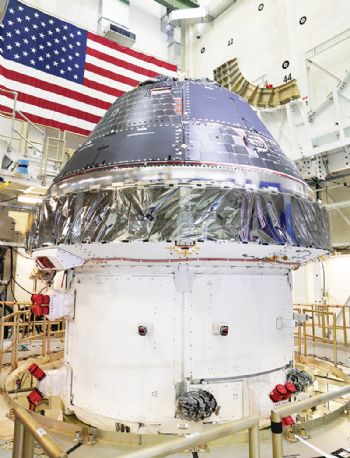
At the Kennedy Space Centre, the plan to see humans walk on the Moon again took a step forward recently, when Lockheed Martin finished building the crew module of the Orion spacecraft that will carry out the un-crewed Artemis 1 mission to the Moon.
US Vice-president Mike Pence announced completion of the module at a ceremony to commemorate the 50th anniversary of the Apollo 11 Moon landing.
Lisa Callahan, general manager of Commercial Civil Space at Lockheed Martin, said: “Orion is a new class of spaceship — designed for long-duration deep-space flight — that will return astronauts to the Moon and eventually take the first humans to Mars and bring them back safely.
"It will accelerate scientific discovery of our solar system and will be the cornerstone of the defining space achievement of this era.”
Since the crew-module pressure vessel arrived in Florida, technicians and engineers from Lockheed Martin, NASA and supporting contractors have ‘meticulously assembled’ the capsule into its finished state.
This included installing the capsule’s avionic computers, harnesses, the propulsion system and its 12 engines, the 11 parachutes, the 16ft-diameter heat shield, forward bay cover and numerous other systems and components.
Mike Hawes, Orion programme manager for Lockheed Martin, said: “Throughout assembly, the team tested and validated the many systems 100 different ways to ensure that they will operate as designed in the harshness of deep space.
"The Artemis 1 flight will test the design and workmanship of the capsule and its service module during the three-week mission out around the Moon and back.
"We are excited for this mission as it paves the way for the first crewed mission — Artemis 2 — in 2022.”
The crew module and service module were stacked together in the Final Assembly and System Testing cell, where they are now being fully integrated.
The combined stack will then be powered up and undergo a series of integrated system tests; in September, it will be shipped to NASA’s Plum Brook Station in Ohio, where it will go through environmental testing in a large thermal vacuum chamber, as well as testing for electromagnetic interference and compatibility.
Once Orion returns to Kennedy at the end of the year, the spacecraft will go through final preparations before Lockheed Martin delivers it to ground systems for launch processing in early 2020.